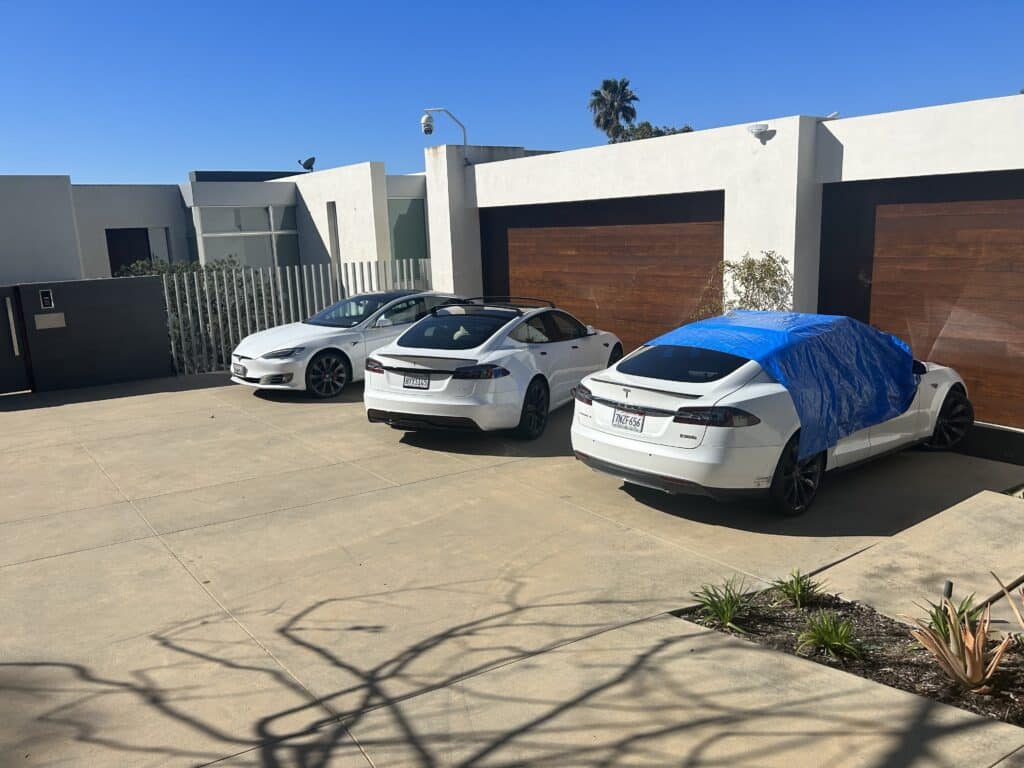Tesla has long talked about launching an affordable, $25k, EV. Tesla has suggested the Model 2 could go into production in 2025, but based on the company’s past timelines, it’s hard to say when we will see Model 2’s on the road.

Tesla’s ‘affordable electric car’, the Model 2, could be ready within the next year to eighteen months, or not until 2027, or not at all.
Due to shareholder pressure and synergy with the much anticipated Tesla Robotaxi, we predict you will see a more affordable Tesla on the road by spring 2026.
However, after a lot of over optimistic promises from Tesla CEO, Elon Musk, over the last few years, it seems Tesla has flirted with changing its strategy for production of the Model 2 to go “all-in” on autonomous driving. The messaging has been conflicting, which has spooked shareholders who see revenue from Tesla FSD as years away.
For growth in the near term, an affordable Tesla seems like a must have. That might mean the Model 2 launch finally happens, or is even likely to happen.

Assuming the Model 2 is unveiled in August 2024, a reasonable timeline for production based on past Tesla models would be late 2025, with 2026 as a potential launch point. If Cybertruck is the bar, the model 2 could launch much later.
What’s changed?
The biggest thing that has changed for the Model 2 is market conditions.
Tesla may have missed its opportunity in North America as major automakers also move into the EV space with more affordable offerings such as the:
- Nissan LEAF – 2023 price new starts at c$29k
- Hyundai Kona – 2023 price starts at $34k
- Mini Cooper – 2022 price starts at $32k
- Fisker PEAR – set for release in 2025 starting at $29k, or $22k with the tax credit.
Reuters reported that Tesla was quietly scrapping the whole idea of the affordable EV, but the resurgence of the Robotaxi and shareholder pressure seem to have put the Model 2 back on the table.
Rumors now suggest that Tesla is developing two different affordable ‘Model 2s’:
- A rugged Model 2X crossover for North America – built in Austin, Texas
- A cheaper, compact Model 2 for Europe – built in Germany, which means it won’t qualify for the US Tax Credit.
Could the Model 2 still happen?
Sure. But I’ll believe it when I see it.
The big shift that could still bring the Model 2 to fruition, and keep it affordable, is if Tesla uses its existing production lines and platforms.
The initial promise was that the Model 2 would be built on a ‘revolutionary new platform’, i.e., a dedicated production line manned by personnel with specialized training and expertise on this design.
Now, Tesla looks set to leverage its current infrastructure and expertise instead, but not necessarily to build the long overdue Model 2.
Instead, Musk has teased the idea of launching a new line of more affordable EVs starting 2025, just not the Model 2 for $25k.
The upshot of this changing strategy is:
- A much shorter time-to-market for the Model 2 or whatever takes its place
- Cash savings for Tesla
- Fewer risks, should the Model 2 prove a bust.
The downside of this kind of approach, though, is that Tesla is essentially choosing short term cost savings over potentially larger savings on Model 2 production long-term.
For customers, the resulting Model 2 or whatever models Tesla launches in 2025/26 will prove a little less affordable than expected. After all, the main driver of cost savings for the Model 2 was supposed to be that dedicated, more efficient, and cheaper production line and the promised ‘revolutionary’ platform.

What will the Model 2 look like?
The Tesla Model 2 design is a closely guarded secret. Industry experts expect it to be:
- A compact hatchback in Europe
- A crossover or sedan in North America and China.
Tesla appears set to deliver multiple Model 2 designs with different body styles to cater to the typical tastes of global markets. The underlying tech should be the same, so as to minimize costs and potential losses, should any given market be slow to adopt the Model 2.
Overall, the Model 2 is set to balance:
- Range
- Performance
- Affordability.
This lower cost Tesla will likely retain many of the sleek styling of the Models S, Y, X, etc., but lose a little in terms of range and battery pack size. It may also be smaller overall and less spacious, with fewer features.
Again, rumors suggest the Tesla team has been playing around with different battery chemistries and manufacturing techniques, so as to balance affordability, range, and performance.
When will the Model 2 come out?
We don’t know.
Just as we don’t yet know much about the Model 2’s build, range, or other features, we don’t have an exact launch date for the EV.
So far, rumors suggest that Tesla wants to launch the Model 2 in early 2025. I am not holding my breath, especially as there are also well substantiated rumors that Tesla is actually kicking the whole Model 2 project to the curb.
If and when that happens, Tesla could move from luxury, niche, performance EV brand to mass market appeal. But only if Tesla can keep that price tag under $25k. After all, with the average price of a used EV now just $23k before the $4k tax credit, there’s not a lot to incentivize driving out of the lot with a rapidly depreciating new ‘Model 2’.